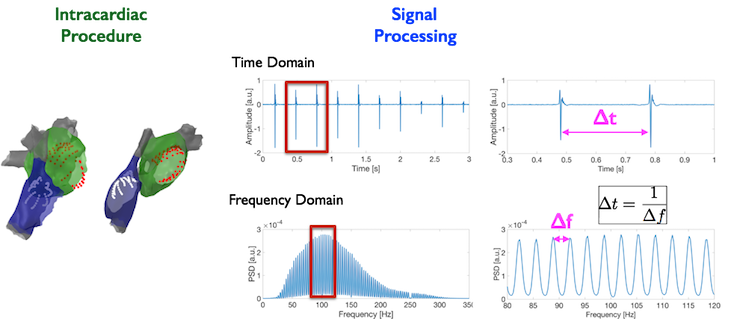Definition, estimation, validation and clinical value of the dominant frequency of intracardiac atrial electograms
- Typ:Bachelorarbeit
- Betreuung:
- Bearbeitung:
-
Motivation
Atrial fibrillation (Afib) and atrial flutter (Aflu) are the most common cardiac arrhythmias with a prevalence of 1 to 2% and are likely to increase in the next 50 years. The treatment of such diseases begins with drug therapy and if not effective, an ablation procedure is the next step. The ablation scars are placed with the intention of restoring regular electrical activation in the atria. During this procedure, intracardiac signals are recorded and maps of the atria are created. In order to decide on the exact location of the ablation scars, the rhythmical and morphological properties of the signals are evaluated by the trained physician.
Among the different features extracted from atrial signals, the amplitude and activation time are the most common ones. However, the so called dominant frequency (DF) has also gained attention in recent years. The DF is a spectrum based descriptor that tries to capture the most relevant frequency present in the spectrum of the signal. Even though some research has been done on this filed, there is not an accepted method on how to calculate the DF. More importantly, its clinical relevance is still unknown.
Tasks
In the first part of this research project, a signal processing study using synthetic signals should be carried out with the aim of studying how the spectral characteristics of the signal vary depending on its rhythmical and morphological properties in the time domain. With the knowledge gained from the study, a general purpose method to estimate the DF should be developed and validated.
In the second part of the project, the clinical relevance of the DF should be studied. For this purpose, the DF should estimated for stable rhythms like Aflu but with different complexities of signal morphologies. After that, the value of DF should be assesses during the course of mapping, providing information about its temporal dynamic without intervention. Last, DF should be monitored around the time of conversion to sinus rhythm.

